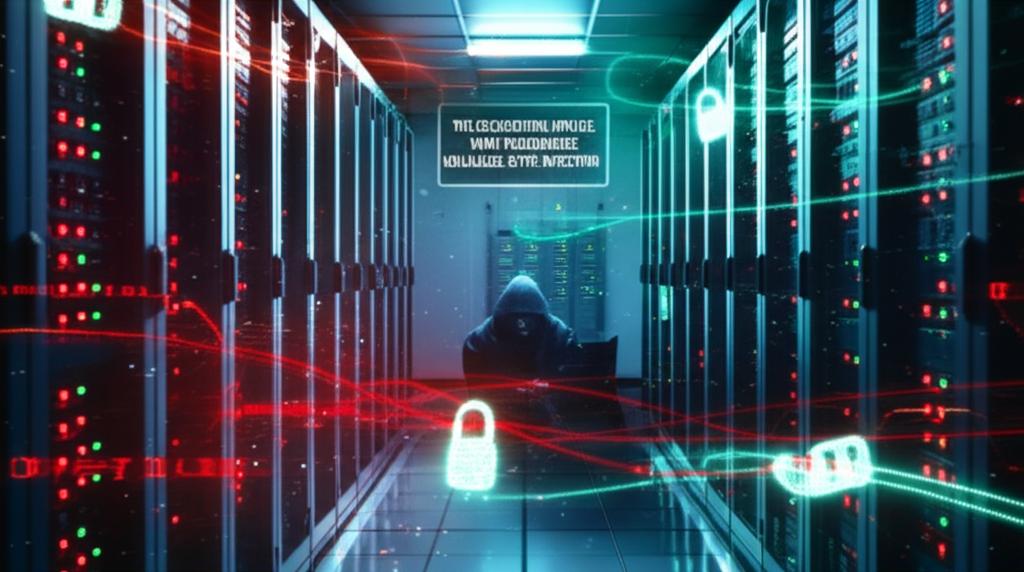The Devastating Impact: What Ransomware Unleashes After Infection
Understanding the Devastating Capabilities of Ransomware
Ransomware is a insidious type of malicious software that, once it infects a system, can wreak catastrophic havoc on individuals, businesses, and critical infrastructure. It represents one of the most significant cyber threats of our era, fundamentally changing the landscape of cybercrime. The question isn’t just ‘if’ an organization might face a ransomware attack, but ‘when’ and ‘how prepared’ they will be. Understanding the full scope of what ransomware allows hackers to do is crucial for developing robust defense strategies.
Initial Breach and Encryption: The Core Ransomware Tactic
The primary and most widely recognized action ransomware performs is data encryption. Once a system is infected, the malware rapidly encrypts files, folders, and sometimes entire drives, rendering them inaccessible to the legitimate user. The hackers then demand a ransom, typically in cryptocurrency, in exchange for a decryption key. Without this key, the data remains locked, often irreversibly. This core functionality is what gives ransomware its name and its immediate, devastating impact.
Beyond Encryption: A Hacker’s Extended Toolkit Post-Infection
While encryption is the hallmark, modern ransomware attacks are far more sophisticated and multifaceted. Once ransomware gains a foothold, hackers often leverage their access for a range of additional malicious activities:
1. Data Exfiltration and Double Extortion
- The Threat: Before encryption, many modern ransomware gangs exfiltrate (steal) sensitive data from the victim’s network.
- The Leverage: If the victim refuses to pay the decryption ransom, the hackers threaten to publish the stolen data on leak sites or sell it to other malicious actors. This ‘double extortion’ significantly increases pressure on victims to pay, as they face not just operational paralysis but also data breaches, regulatory fines, and severe reputational damage.
2. System Disruption and Operational Paralysis
- The Goal: Even without paying the ransom, the act of encryption itself causes severe operational disruption. Businesses can grind to a halt as critical systems, databases, and applications become inaccessible.
- The Impact: This can lead to massive financial losses due to downtime, lost productivity, and the costs associated with recovery efforts. Hospitals may be unable to access patient records, manufacturing plants may cease production, and essential services can be severely impaired.
3. Lateral Movement and Network Compromise
- The Expansion: Initial ransomware infection often starts with a single compromised machine. However, sophisticated attackers don’t stop there. They use the initial access to move laterally within the network, escalating privileges and compromising more systems, including backups, domain controllers, and cloud environments.
- The Control: This allows them to gain a deeper, more pervasive control over the victim’s infrastructure, making recovery far more challenging and ensuring they have maximum leverage.
4. Ransomware as a Service (RaaS) and Affiliate Programs
- The Business Model: The rise of RaaS models means that even less technically skilled individuals can deploy powerful ransomware. Core developers provide the malicious software and infrastructure, while affiliates carry out the attacks, often receiving a significant cut of any successful ransom payments.
- The Scale: This model has dramatically increased the volume and reach of ransomware attacks, making it a pervasive global threat.
5. Long-Term Persistence and Backdoors
- The Aftermath: Even if a victim manages to decrypt or restore their systems, the initial breach might have left backdoors or other malicious implants.
- The Danger: Hackers can use these for future attacks, espionage, or to sell access to other cybercriminals, ensuring long-term persistence within the compromised network.
Mitigating the Ransomware Threat
Given the extensive capabilities that ransomware provides to hackers once infected, robust cybersecurity measures are no longer optional. These include:
- Regular and segmented backups (offline or immutable).
- Strong endpoint detection and response (EDR) solutions.
- Multi-factor authentication (MFA) everywhere.
- Employee cybersecurity training.
- Network segmentation.
- Incident response plans.
- Patch management and vulnerability scanning.
Understanding the severe and multifaceted impact of what ransomware allows hackers to do is the first step in building resilient defenses against this evolving cyber menace. Proactive security, continuous monitoring, and a prepared response are essential to safeguarding digital assets.







